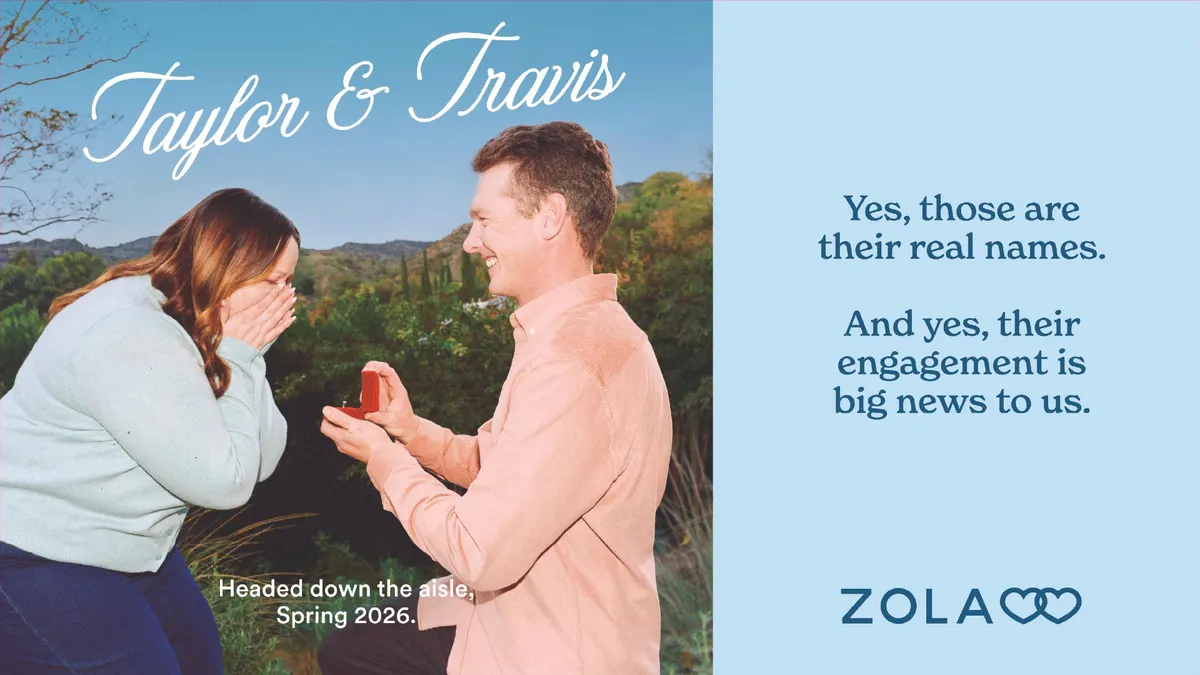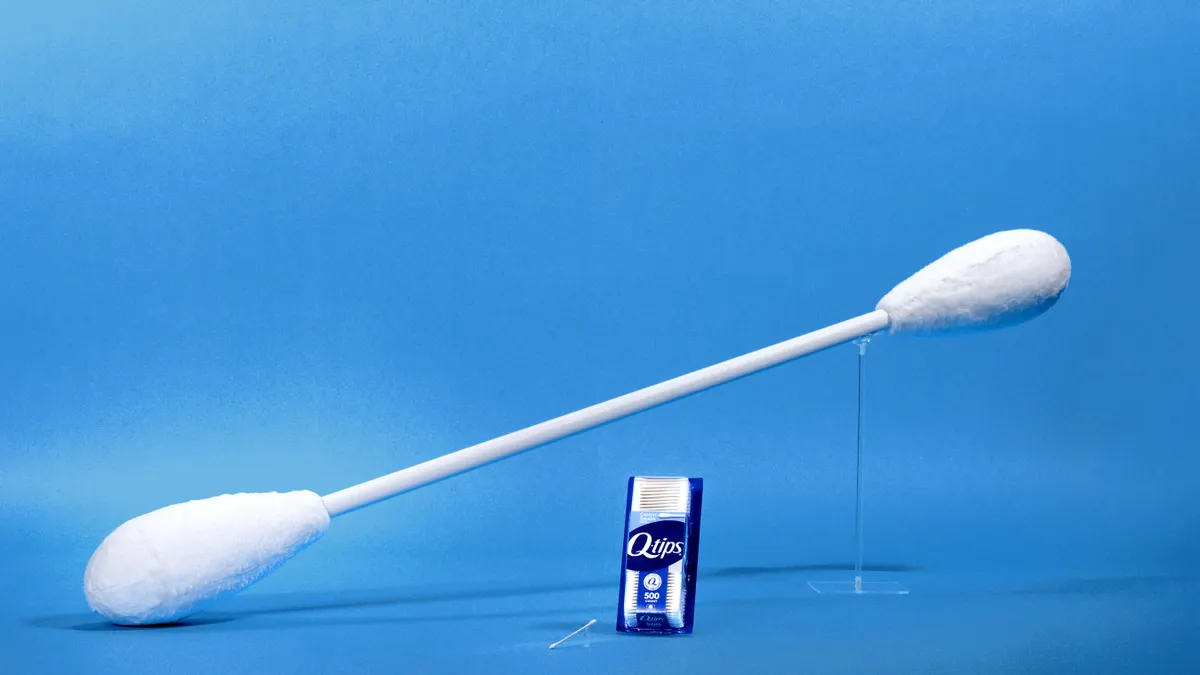A recent Starbucks campaign in the U.K. made waves for linking something common at the coffee chain — customers getting their names written on cups — to a moment of greater personal significance: when transgender people change their names to better reflect their identities.
Developed with ad agency Iris and with the support of trans youth organization Mermaids, Starbucks' "What's your name" spot plays on an organic social media trend where transitioning consumers document how they've tested out name changes through Starbucks orders. The creative effort might've read as radical just a few years ago. Today, it comes as part of a new gender paradigm that marketers need to take into consideration.
There is a growing body of research that indicates a real business case for thinking about gender in a less restrictive way, and not just to target LGBT+ people. From internal teams to consumer-facing strategies and product design, the adoption of less narrow, binary gender parameters could prove particularly crucial to winning over elusive young consumers who are more accepting — and demanding — of diverse representation.
"The belief that there must be equality around race lines, around gender lines and around sexual preference lines continues to get stronger and stronger with younger generations," said Dipanjan Chatterjee, a VP and principal analyst at Forrester and author on a recent report from the researcher about why brands need to embrace a different approach to gender.
"This is the new normal. This is not a topic that people discuss and debate; this is life," Chatterjee said.
Young consumer groups are also holding brands more accountable, which could amplify pressures to change since advertising and media are often arbiters of what constitutes mainstream representation. Developing an inclusive strategy now could be both a corrective for marketers that previously enforced a limited view on gender and a means of avoiding accusations of woke-washing as an appetite for purposeful, authentic brands that enact tangible change continues to spread.
"For the most part, we still adhere to this very gendered construct of the customer," Chatterjee said. "As you start to peel back the layers and dig deeper, you realize how, in some sense, insidious and deeply ingrained this notion is in marketing."
Reflecting society
The movement to recognize more transgender and nonbinary consumers is part of a broader break with a rigid approach to gender in marketing. There are a few standout cases beyond Starbucks.
Always, the menstruation products brand owned by Procter & Gamble, last fall removed the Venus symbol for "female" from its packaging in recognition that transgender men can get their periods. Gillette, another P&G label, recently ran a social video campaign showing a transgender teen's first shave. And Coke briefly featured a person with they/them pronouns in a Super Bowl ad in 2018.
"This is the new normal. This is not a topic that people discuss and debate; this is life."

Dipanjan Chatterjee
VP, principal analyst, Forrester
A handful of campaigns isn't reflective of larger demographic trends, however. Half of women and four in 10 men in the U.S. now believe that there is a spectrum of gender identities, according to a recent Ipsos poll titled "The Future of Gender is Increasingly Nonbinary." An additional 16% of those surveyed said they know a person who identifies as transgender, per Ipsos. One would be hard-pressed to claim that type of familiarity is accurately portrayed in advertising and product design, but there may be an opportunity to fill those gaps for marketers.
"It's the responsibility of the companies to understand how the world is actually reflected ... There's a lot of movement now in how to create products that are a bit more neutral," Oscar Yuan, president of Ipsos' Strategy3 division, told Marketing Dive.
At a time when CMOs are seeing the stability of their jobs weaken, finding a cause to spearhead can be a lifeline. A better grasp of the modern gender paradigm is an area of opportunity, according to Yuan, though something CMOs must approach with sensitivity and an ear to the ground with other departments like HR.
"Having an understanding of what's actually happening out there is the role of the CMO," Yuan said. "It does require a champion."
Disruptors lead the pack
Some marketers could still be hesitant to address changes in gender representation given the intense negative reaction to campaigns that have waded into the territory or touched on related areas, such as toxic masculinity. Brands with a wide national presence, in particular, could feel they risk alienating large segments of their audience.
"Sometimes it's easier to be a more niche brand and get away with these things," Chatterjee said. "That enables you as a brand to make some very strong statements without many repercussions."
But brands that take real risks are becoming more common as politics bleed further into the marketing sphere. Legacy marketers are at the same time losing market share to a crop of direct-to-consumer (DTC) brands that lead the pack on important conversations, including breaking down gender norms.
"They are what you would think of as evolved and emancipated," Chatterjee said of DTCs.
In its report, Forrester called out the work of Billie, a razor startup that centers much of its messaging around female body hair. Chatterjee pointed out that many of Billie's ads read as intentionally provocative, but call attention to how body hair is a taboo subject for the women's shaving category — a hypocrisy that's been enforced for decades, in part thanks to advertising from the packaged goods sector's old guard.
"When we create personas, we tend to think of 'soccer moms' and so on," Chatterjee said. "What Billie was saying here was, look, this is a bogus concept, and we are just going to cater to you as the individual, not to some kind of societal correlate of your sex."
P&G acquired Billie for an undisclosed sum earlier this year. Snapping up a brand like Billie — which followed similar acquisitions from the Cincinnati-based CPG giant — signals another key point about the evolving discussion around gender: Progressive brands in the space can bolster the bottom line and provide a competitive advantage over stodgier rivals.
"You can talk about this all day long, but unless it's good for business, brands won't move," Yuan said. "There are very few brands that actually do something for social change or social justice."
Managing the risks
That's not to say marketers should just follow the money when it comes to rethinking their approach to gender representation in marketing. One of the biggest instigators of backlash can be brands that jump into a sensitive conversation without ensuring they have accounted for their history or business practices on the back end.
"If it's really more of a marketing campaign and an initiative rather than a deeply held belief, I think you've gotten yourself into hot water," Chatterjee said.
Internal HR and healthcare practices are particularly crucial when it comes to developing inclusive campaigns. Starbucks was met with praise for "What's your name," but pockets of criticism as well.
Current and former transgender employees told BuzzFeed News that the coffee chain was not always accommodating in recognizing their transition or supporting gender-affirming medical treatment. Starbucks declined to comment to BuzzFeed News regarding individual allegations but pointed out that it has provided Workplace Gender Transition Guidelines and covered reassignment surgery for years via a spokesperson.
"[U]nless it's good for business, brands won't move. There are very few brands that actually do something for social change or social justice."

Oscar Yuan
President, Ipsos Strategy3
Grappling with some degree of backlash is a reality for gender-inclusive efforts, according to Yuan, and brands should be well aware that there will be missteps along the way. A bigger risk, Yuan cautioned, would be not making an effort at all and having that come back around to bite a marketer further down the line.
"The key question is understanding who your customers are, what their values are and then adjusting as you have to, but not shying away from the discussion," Yuan said.
"There's a lot of discussions that slowly poke toward the subject that don't need to be as aggressive as saying we're moving to a nonbinary world," he added. "This is how change happens. You push the right amount in the right places, and then things will slowly unfold."





















